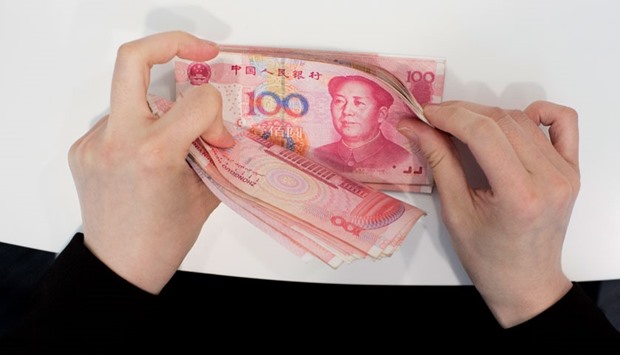There’s no need to panic, according to the yuan’s top forecaster, even as the currency posted the biggest annual loss in more than two decades and a majority of economists predicted a further depreciation in 2016.
“While a weaker yuan could create fear initially, the market will realise it’s a natural consequence of a more flexible yuan and divergent US-China monetary policy,” said Ju Wang, a Hong Kong-based senior Asian currency strategist at HSBC Holdings, which had the best estimates for the onshore yuan over the last four quarters as measured by Bloomberg Rankings. A more adjustable policy will allow for swift reactions to domestic conditions, which “would be structurally positive for China’s economy,” she said.
The nation overhauled its foreign-exchange system in 2015, giving market forces greater say in setting the yuan’s reference rate, allowing more foreign participants onshore and doubling trading hours.
The central bank kept investors guessing as it supported the exchange rate from March to August, shocked global markets with an August 11 devaluation, and then spent billions of dollars to prop up the yuan before winning reserve status at the International Monetary Fund on November 30.
The currency tumbled 4.5% in 2015 to close at 6.4936 a dollar in Shanghai on December 31, according to China Foreign Exchange Trade System prices. That’s the biggest decline in data going back to 1994. The central bank cut its daily fixing, which limits onshore moves to a maximum 2% on either side, by 6.1% for the year. The reduction was the most since 2005, when China unpegged its currency from the greenback and allowed it to fluctuate against a basket of exchange rates. In Hong Kong’s market, which is free of the mainland’s capital controls, the yuan posted an unprecedented 5.3% loss for the year to 6.5704 on December 31, according to data compiled by Bloomberg. The People’s Bank of China spread its influence to the city in 2015, taking the previously rare step of intervening offshore. The currency pared the day’s losses on December 31 within a 10-minute period, spurring intervention speculation. “It’s likely the PBoC intervened in the offshore market, considering the move was very quick and significant,” said Kenix Lai, a foreign-exchange analyst at Bank of East Asia in Hong Kong. “The gap between the onshore and offshore yuan widened quite a bit in the past few days and heavy depreciation expectations will lead to capital outflows. A gap that’s above 1,000 pips will likely trigger intervention in the near term.”
The difference, which widened to 994 pips on December 31 before narrowing to 768, increased to 1,200 points the previous day before suspected PBoC intervention strengthened the offshore exchange rate.
The August devaluation spurred capital outflows and drained $213bn from the nation’s currency reserves as policy makers looked to control the yuan’s decline. Financial institutions including the central bank sold 221bn yuan ($34bn) of foreign exchange in November.
A total of $508bn of capital left China in the August-November period, according to a Bloomberg estimate that takes into account funds held in dollars by exporters and direct investment recipients. Exports declined for a fifth straight month.
The country will seek to increase the yuan’s convertibility in an orderly manner by 2020 and change the way it manages currency policy, according to the Communist Party’s plan for the next five years.

A Standard Chartered employee counts yuan banknotes at one of the bank’s branches in Hong Kong. The Chinese currency tumbled 4.5% in 2015 to close at 6.4936 a dollar in Shanghai on December 31.


